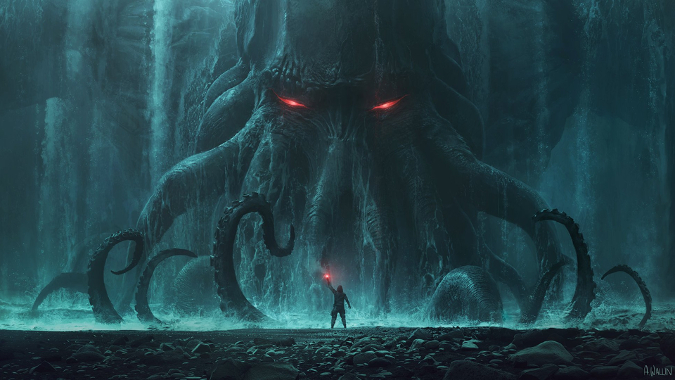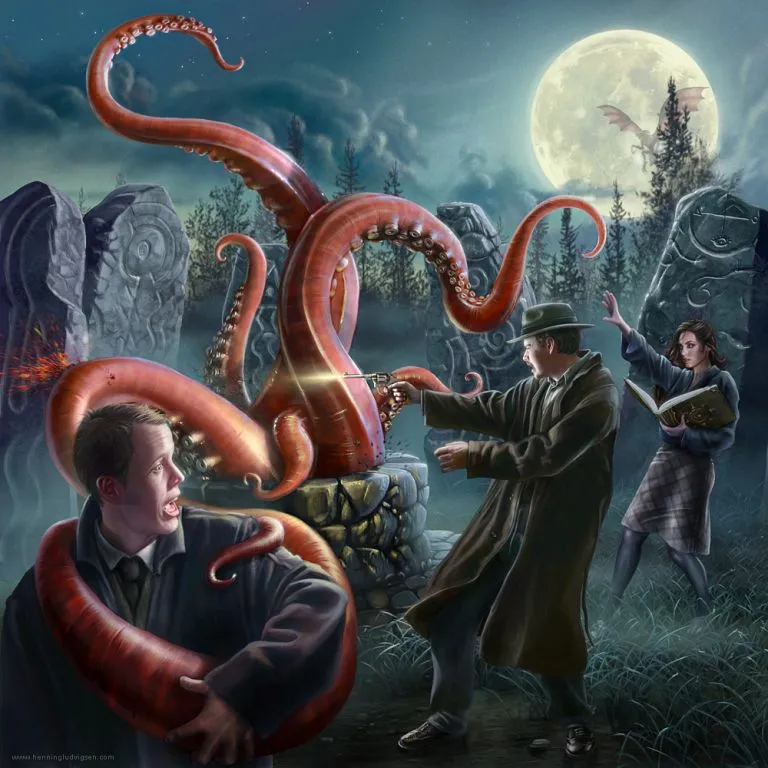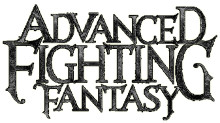
Game Systems
Game Systems

There are many different game systems which use very similar principles in general such as all involving the player playing a 'character' in an truly immersive and interactive world in which they must complete quests, overcome obstacles and challenges, make decisions for right or wrong and work as part of a team.
All the games we offer have their own adaptations to gameplay, character, setting and content.
Please look below for a brief overview of each of the systems we can offer!

Dungeons and Dragons
The king of TTRPGs! Dungeons & Dragons is a fantasy tabletop role-playing game originally designed by Gary Gygax and Dave Arneson. The game was first published in 1974 by Tactical Studies Rules, Inc. It has been published by Wizards of the Coast since 1997. It is currently in its 5th edition.
In Dungeons & Dragons, the players form an adventuring party who explore fantasy worlds together as they embark on epic quests and level up in experience. The Dungeon Master (also known as the DM) is the game's referee and storyteller. There's no winning or losing in D&D-at least, not in the conventional way.
At its heart, D&D is a game that focuses on storytelling. The dice just help you along. Everything is your decision, from what you look like, to how you act, to what happens next.
The collective creativity in your D&D game builds stories that you'll tell again and again-ranging from the stuff of legend to absurd incidents that'll make you laugh years later.
Have fun and remember the golden rule-never split the party!


Call of Cthulhu
Call of Cthulhu is a horror fiction role-playing game based on H. P. Lovecraft's story of the same name and the associated Cthulhu Mythos. The game, often abbreviated as CoC, is published by Chaosium. The game was first released in 1981, and eighteen editions (mostly fairly minor revisions) have been published to date. The game makes use of Chaosium's Basic Role-Playing (BRP) system, first seen in the game RuneQuest, but with special rules for Sanity. It is notable among roleplaying games for its longevity and also for remaining largely unchanged for most of its history, with only the most recent seventh edition making significant changes to the rules.
The game takes place in the world of the Cthulhu Mythos, by default in 1920s Lovecraft Country. Popular supplements led to later editions also including the option to play in 1890s England (introduced in Cthulhu by Gaslight), and the modern day (originally the 1980s, introduced in Cthulhu Now). Other supplements, published by Chaosium and others, support other settings, including World War II (Achtung! Cthulhu, also for Trail of Cthulhu), 11th century Europe (Cthulhu Dark Ages), Ancient Rome (Cthulhu Invictus) and the 23rd century (Cthulhu Rising).
Whether battling entities from outerspace and the Mythos, uncovering secretive and evil cults in downtown New Orleans, or excavating alien artefacts from a necropolis in the Sahara Desert, Call of Cthulhu will be an experience like no other!


Advanced Fighting Fantasy
Advanced Fighting Fantasy (AFF) is a British roleplaying game based on the Fighting Fantasy and Sorcery! gamebooks, first published in 1989. Just as in the gamebooks, AFF is set in the world of Titan. A second edition of AFF was published in 2011.
AFF is chiefly meant to facilitate the games master to write his or her own adventures inspired by Fighting Fantasy. The few adventures published for the game are brand new adventures specifically written for the system as opposed to converting existing gamebook stories for multiplayer RPG usage.
In AFF, players use their Skill, Stamina and Luck - with addition of a Magic skill - to complete fantasy quests in a world explored in the popular Fighting Fantasy range of gamebooks written by Steve Jackson and Ian Livingstone.


Middle Earth Role Playing
Middle-earth Role Playing (MERP) was a subset of the Rolemaster role-playing game rules set in J.R.R. Tolkien's Middle-earth and published by Iron Crown Enterprises.
The system was somewhat like Dungeons & Dragons with character classes and levels. Classes available included Animist (Cleric), Bard, Mage, Ranger, Scout (Thief) and Warrior (Fighter). The system departed in having a highly detailed combat and magic system.
In the MERP game system, attributes are rating between 0 and 100, and skills can surpass these limits (under 0 or over 100). An attack roll would consist of a percentile roll + skill rating + attribute rating - target's dodge rating. This result was looked up on a table against the victim's armor type (leather/plate). Most hits in combat would cause a 'critical' which would be rolled and looked up on separate tables. For some, these criticals are quite entertaining due to their variety and creativeness, but for others the task of adding and subtracting high numbers and then consulting a table is the height of roll-playing, not role-playing.
Spell casters had the unique advantage in MERP that they learned lists of 10 spells (1 per level) as a unit. Once a character learned the Healing list, he would be able to cast increasingly better healing spells as his level increased.
The setting for this game predates the War of the Ring by around 1400 years (the majority of the modules were set in the years after the Great Plague, ca. Third Age 1640) and as such it represented a version of Middle-earth different to that seen in The Lord of the Rings or The Hobbit.



Vampire: The Masquerade
Vampire: The Masquerade is a tabletop role-playing game (tabletop RPG) created by Mark Rein-Hagen and released in 1991 by White Wolf Publishing as the first of several Storyteller System games for its World of Darkness setting line.
Vampire: The Masquerade is the first World of Darkness game and the first Storyteller System game published by White Wolf. A major departure from the more power and heroics oriented games of the era, VTM is a game of personal horror. It is the parent and the most popular of all the World of Darkness games, and was the genesis of almost all the major ideas people associate with White Wolf.
In Vampire: the Masquerade, the players assume the role of vampires, immortal beings cursed with an unquenchable thirst for blood and vulnerability to sunlight - creatures forever bound to their inner Beast (the animal urges of hunger, fear and rage). It is a game of personal horror, as the characters are continually forced to walk a moral tightrope between their need to survive and the horrific means by which they ensure it.


MÖrk Borg
MÖRK BORG is a pitch-black apocalyptic fantasy RPG about lost souls and fools seeking redemption, forgiveness or the last remaining riches in a bleak and dying world. Who are you? The tomb-robber with silver glittering between cracked fingernails? The mystic who would bend the world's heart away from it's inevitable end? Confront power-draining necromancers, skulking skeletal warriors and backstabbing wickheads. Wander the Valley of the Unfortunate Undead, the catacombs beneath the Bergen Chrypt or the bedevilled Sarkash forest. But leave hope behind - the world's cruel fate is sealed, and all your vain heroic efforts are destined to end in death and dismay. Or are they?
MÖRK BORG is a complete game in the OSR genre, that can be played as is or be picked apart for use in your own homebrew. The rules are easily made compatible with most of the editions of the world's largest role-playing game.


Tunnels and Trolls
Tunnels & Trolls (abbreviated T&T) is a fantasy role-playing game designed by Ken St. Andre and first published in 1975 by Flying Buffalo. The second modern role-playing game published, it was written by Ken St. Andre to be a more accessible alternative to Dungeons & Dragons and is suitable for solitaire, group, and play-by-mail gameplay.
Players explore a world of fantasy creatures and challenges, equiped with their class skills and abilities.


Traveller
Traveller is a science fiction role-playing game first published in 1977 by Game Designers' Workshop. Marc Miller designed Traveller with help from Frank Chadwick, John Harshman, and Loren Wiseman.[1] Editions were published for GURPS, d20, and other role-playing game systems. From its origin and in the currently published systems, the game relied upon six-sided dice for random elements. Traveller has been featured in a few novels and at least two video games.
Characters journey between star systems, engaging in exploration, ground and space battles, and interstellar trading. One player, the game master or referee, oversees task attempts and guides events as the players explore the setting.
Characters are defined not by the need to increase native skill and ability but by achievements, discoveries, wealth, titles, and political power.
